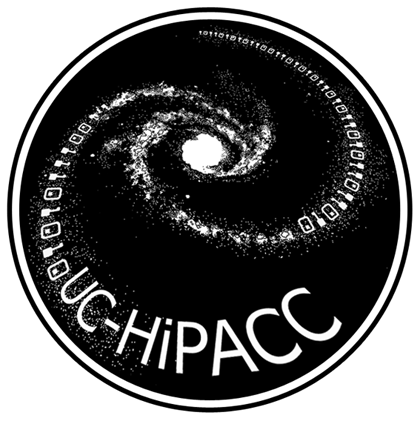UC San Diego Among Multidisciplinary Awards Providing $221M Nationally for Cutting-Edge Projects
Technology & Engineering

The San Diego Supercomputer Center (SDSC) at the University of California, San Diego, in conjunction with the University of California’s High-Performance AstroComputing Center (UC-HiPACC), will host a two-week long summer school designed to help the next generation of astronomers manage the ever-increasing amount of data generated by new instruments, digital sky surveys, and simulations.
The 2012 UC-HIPACC AstroComputing Summer School on AstroInformatics, will be held at SDSC July 9-20. The program is open to graduate students or post-doctoral fellows. Applications are due by March 16, 2012. Registration information and full program details, including speakers and topics, can be found at http://hipacc.ucsc.edu/ISSAC2012.html.
“Scientists in every area of research are facing a veritable deluge of digital data, and nowhere is this more evident than in the field of astronomy,” said Michael Norman, director of SDSC and a world-renowned astrophysicist. “Today’s telescopes are generating huge amounts of new information about the universe – in some cases by the second. Astronomers will need to know how to leverage the capabilities of data-intensive supercomputers to analyze all this data efficiently while bringing these observations and simulations into a common framework.”
“This summer school will empower astronomers to compare massive observational data with massive theoretical outputs,” said Joel R. Primack, director of UC-HiPACC, a consortium of nine UC campuses and three Department of Energy (DOE) laboratories: Lawrence Berkeley National Laboratory, Lawrence Livermore Laboratory, and Los Alamos National Laboratory. “‘Big Data’ is a challenge for many fields of science and engineering, and people who have learned how to use data-intensive supercomputers will be increasingly valuable.”
A key feature of the UC-HiPACC summer schools has been the access by all students to powerful supercomputers, on which the program’s lecturers have put relevant codes and sample inputs and outputs. The schedule also includes workshops each afternoon, in which students are taught how to use these resources.
Students attending this year’s UC-HIPACC summer school will be issued user accounts on SDSC’s new Gordon supercomputer, which will contain several relevant astronomical data sets and simulations. The result of a five-year, $20 million National Science Foundation (NSF) grant, Gordon can process data-intensive problems about 10 times faster than other supercomputers because it is the first such system to employ massive amounts of flash-based memory – common in smaller devices such as cellphones or laptop computers – instead of slower spinning disks.
Currently the most powerful supercomputer in all of Southern California in terms of speed and capability, Gordon was recently ranked as among the top 50 fastest supercomputers in the entire world in terms of speed of doing pure math (see top500.org). However, it is the most powerful high performance computing (HPC) system in the world when it comes to accessing data. In recent validation tests, Gordon achieved an unprecedented 36 million input/output operations per second, or IOPS, a critical measure for doing data-intensive computing such as sifting through huge datasets to find a small sliver of meaningful information. Full specifications of SDSC’s Gordon can be found here.
The University of California High-Performance AstroComputing Center (UC-HiPACC), based at UC Santa Cruz, was formed in 2010 with the mission of fostering collaborations among astronomers, computational astrophysicists, computer scientists, computer hardware engineers, and the builders and users of UC telescopes across the entire University of California system. UC-HiPACC does not directly fund research or major hardware. Instead, it supports activities to facilitate and encourage excellence and collaboration in astronomy across the UC system.
As an Organized Research Unit of UC San Diego, SDSC is considered a leader in data-intensive computing and cyberinfrastructure, providing resources, services, and expertise to the national research community, including industry and academia. Cyberinfrastructure refers to an accessible, integrated network of computer-based resources and expertise, focused on accelerating scientific inquiry and discovery. SDSC supports hundreds of multidisciplinary programs spanning a wide variety of domains, from earth sciences and biology to astrophysics, bioinformatics, and health IT. With its two newest supercomputer systems, Trestles and Gordon, SDSC is a partner in XSEDE (Extreme Science and Engineering Discovery Environment), the most advanced collection of integrated digital resources and services in the world.
Keep up with all the latest from UC San Diego. Subscribe to the newsletter today.